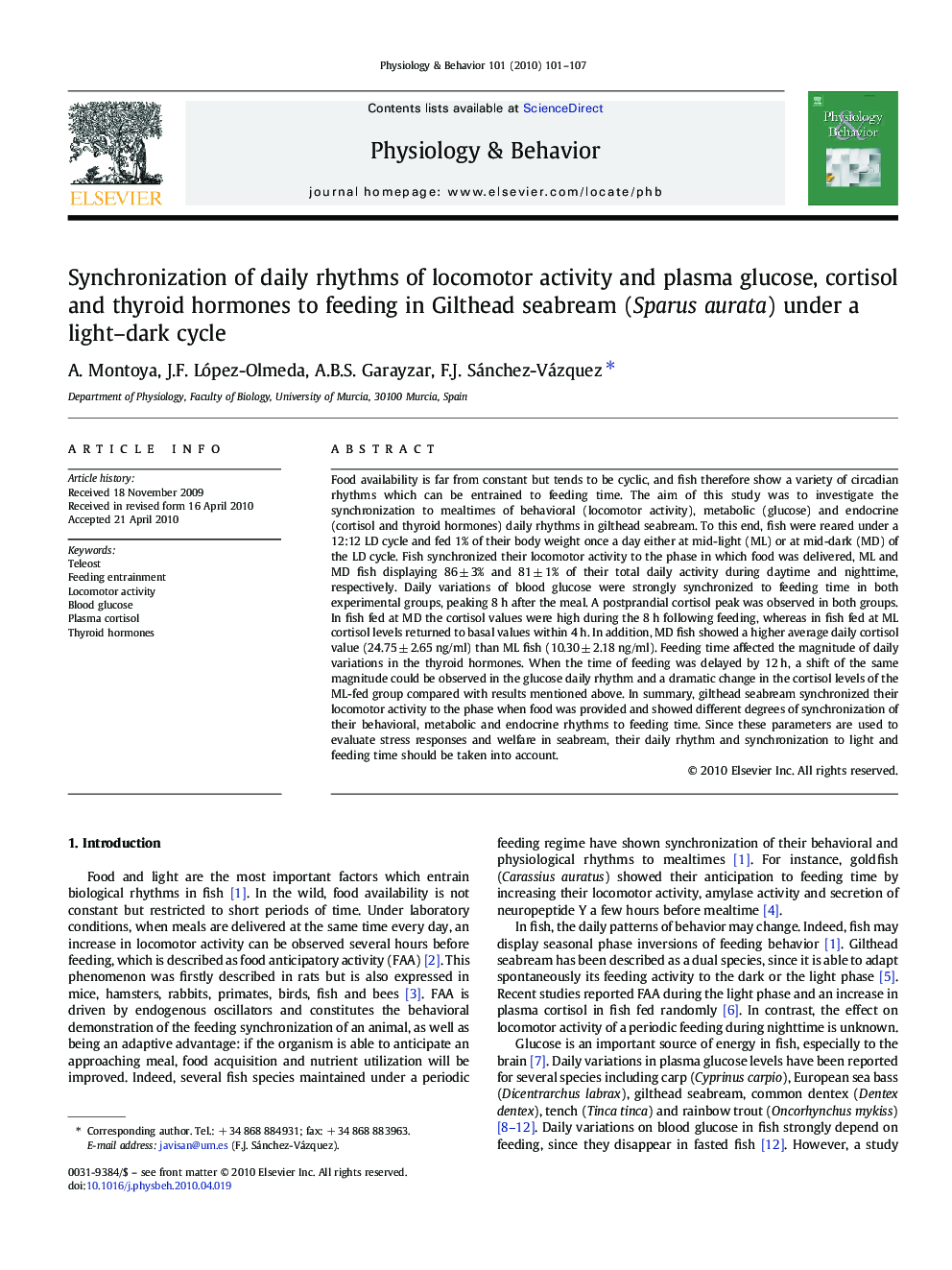| کد مقاله | کد نشریه | سال انتشار | مقاله انگلیسی | نسخه تمام متن |
|---|---|---|---|---|
| 2844702 | 1166358 | 2010 | 7 صفحه PDF | دانلود رایگان |

Food availability is far from constant but tends to be cyclic, and fish therefore show a variety of circadian rhythms which can be entrained to feeding time. The aim of this study was to investigate the synchronization to mealtimes of behavioral (locomotor activity), metabolic (glucose) and endocrine (cortisol and thyroid hormones) daily rhythms in gilthead seabream. To this end, fish were reared under a 12:12 LD cycle and fed 1% of their body weight once a day either at mid-light (ML) or at mid-dark (MD) of the LD cycle. Fish synchronized their locomotor activity to the phase in which food was delivered, ML and MD fish displaying 86 ± 3% and 81 ± 1% of their total daily activity during daytime and nighttime, respectively. Daily variations of blood glucose were strongly synchronized to feeding time in both experimental groups, peaking 8 h after the meal. A postprandial cortisol peak was observed in both groups. In fish fed at MD the cortisol values were high during the 8 h following feeding, whereas in fish fed at ML cortisol levels returned to basal values within 4 h. In addition, MD fish showed a higher average daily cortisol value (24.75 ± 2.65 ng/ml) than ML fish (10.30 ± 2.18 ng/ml). Feeding time affected the magnitude of daily variations in the thyroid hormones. When the time of feeding was delayed by 12 h, a shift of the same magnitude could be observed in the glucose daily rhythm and a dramatic change in the cortisol levels of the ML-fed group compared with results mentioned above. In summary, gilthead seabream synchronized their locomotor activity to the phase when food was provided and showed different degrees of synchronization of their behavioral, metabolic and endocrine rhythms to feeding time. Since these parameters are used to evaluate stress responses and welfare in seabream, their daily rhythm and synchronization to light and feeding time should be taken into account.
Journal: Physiology & Behavior - Volume 101, Issue 1, 4 August 2010, Pages 101–107